In my experience, there are two ways to reset a Neo4j database, depending on what you need.
Method 1: Simply delete all nodes/relationships/indexes/constraints
In Neo4j Browser, or in Py2neo with graph.run() (link).
# All nodes and relationships.
MATCH (n) DETACH DELETE n
# All indexes and constraints.
CALL apoc.schema.assert({},{},true) YIELD label, key RETURN *
However, despite being convenient, this approach is not suitable in case of using command neo4j-admin.bat import for BULK import, i.e. ideal for importing millions of nodes at once quickly.
Method 2: Reset database for BULK Import Tool
It's not possible to BULK import when the database is not empty. I tried the above method, but still received the error:
Import error: C:\Users\[username]\AppData\Local\Neo4j\Relate\Data\dbmss\dbms-dd16c384-78c5-4c21-94f3-b0e63e6c4e06\data\databases\neo4j already contains data, cannot do import here
Caused by:C:\Users\[username]\AppData\Local\Neo4j\Relate\Data\dbmss\dbms-dd16c384-78c5-4c21-94f3-b0e63e6c4e06\data\databases\neo4j already contains data, cannot do import here
java.lang.IllegalStateException: C:\Users\[username]\AppData\Local\Neo4j\Relate\Data\dbmss\dbms-dd16c384-78c5-4c21-94f3-b0e63e6c4e06\data\databases\neo4j already contains data, cannot do import here
To tackle this issue, I deleted the following folders:
c:\Users\[username]\AppData\Local\Neo4j\Relate\Data\dbmss\dbms-dd16c384-78c5-4c21-94f3-b0e63e6c4e06\data\databases\neo4j
and
c:\Users\[username]\AppData\Local\Neo4j\Relate\Data\dbmss\dbms-dd16c384-78c5-4c21-94f3-b0e63e6c4e06\data\transactions\neo4j
Then carried out the Import command:
"C:\Users\[username]\AppData\Local\Neo4j\Relate\Data\dbmss\dbms-dd16c384-78c5-4c21-94f3-b0e63e6c4e06\bin\neo4j-admin.bat" import --database=neo4j --multiline-fields=true --nodes=node_ABC.csv --nodes=node_XYZ.csv relationships=relationship_LMN.csv --relationships=relationship_UIO.csv
Start the Neo4j database. In Neo4j Desktop, the labels and relationships should now be recognized.

Notice that the database I deleted (neo4j) and the database I imported to are the same.
